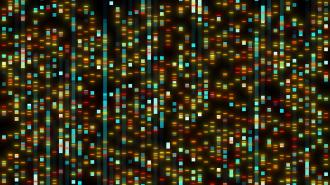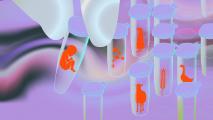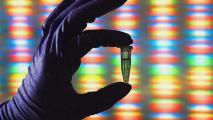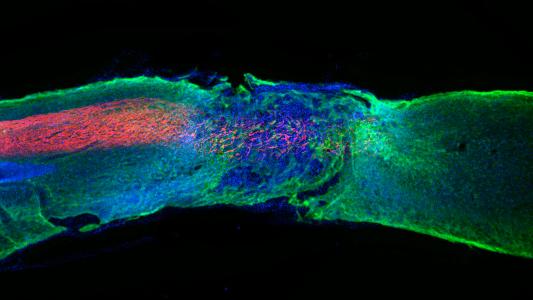Researchers may have finally discovered a genetic cause of lupus, the autoimmune disorder (and elusive enemy of Dr. Gregory House).
Their study, published in Nature, points to a mutation in a gene that senses viral RNA.
Previous studies have implicated the gene, called TLR7, in lupus before, El Pais reports, but this new study identified a previously unknown variant of the gene in a Spanish teenager who was diagnosed with lupus as a child.
Lupus is an autoimmune disorder, the cause of which has remained a mystery.
“We have shown for the first time how rare gene variants that occur in less than one per cent of the population cause lupus and how these variants drive the disease in the body,” Simon Jiang, a researcher at Australian National University’s Centre for Personalised Immunology and study author, said in a statement.
The discovery may help researchers develop a targeted treatment for lupus, Jiang said — and not just for patients with this exact rare mutation.
It is lupus: Lupus is an autoimmune disorder wherein the body’s immune system begins to attack its own healthy tissues and organs, causing inflammation, fatigue, joint pain, and rashes.
The disease is notoriously difficult to diagnose, and it can be triggered in people with a propensity for it in a number of ways, including viral infection, certain medications, and sunlight. Currently, treatment focuses on mitigating the symptoms of lupus; there’s no cure.
But the ultimate cause of lupus has remained a mystery.
A teenage breakthrough: When Gabriela Piqueras was five years old, the smallest bump made her bruise — and her life has been constant medical care ever since.
“Between appointment and appointment, because I had a thousand appointments a day, I went with my father or mother to see the peacocks in El Retiro,” a large park in Madrid, Piqueras, now 16, told El Pais. “It is a nice way to clear your mind.”
The researchers found a single point mutation in the TLR7 gene. When that mutation was recreated in mice, they developed lupus.
Coming down with severe lupus at such a young age is unusual, the Hudson Institute of Medical Research explained, which suggested to the researchers that a single mutation may be to blame.
It was in Piqueras’ genome that the researchers found a single point mutation in the TLR7 gene. To test whether the mutation was really the cause of her lupus, the researchers used CRISPR to recreate the same mutation in mice.
The mice developed lupus.
“It was already known that this receptor appeared to be activated in lupus patients, but no one knew if it was a cause, a consequence or a side effect of inflammation,” corresponding author Carola García de Vinuesa reported to El Pais.
“Now we can show that it is the cause.”
The mutation increases the immune system’s sensitivity to guanosine, one of the building blocks of DNA and RNA, Hudson expert Michael Gantier explained. This causes the infection sensor to become switched on even if there is no viral RNA present, which is what it is designed to look out for.
Confused about their target, the misdirected immune cells then begin to attack the healthy tissues.
If the researchers are correct, it may solve another vexing lupus question as well: The disease is 10x more frequent in women than men, and TLR7 sits on the X chromosome — making a possible mutation twice as likely.
Catching the disease and therapies: “Lupus is a disease that can be very hard to diagnose,” Jiang said. “You can have a lot of illnesses that look like lupus, smell like lupus, but we can’t formally call it lupus.”
Jiang’s hope is that sequencing a suspected lupus patient’s genome for mutations on this gene may lead to quicker, more definitive diagnoses. It could also provide a target for therapies, like TLR7 inhibitors.
Researchers hope the discovery may lead to better diagnostic tools and therapies for lupus and other autoimmune diseases.
And since the gene is associated with other autoimmune disorders as well, it may help researchers better understand and treat diseases like rheumatoid arthritis and type 1 diabetes, Jiang said.
During a particularly long hospitalization, a friend of Piqeuras’ father gave her a stuffed elephant, Kika. The plush toy, which she still owns, will now live on in lupus research, as both the mutation itself, and the mice which model it, have been named by Piqueras after her pachyderm friend.
“I hope finding the genetic cause of lupus will give hope to people with lupus and make them feel they are not alone in fighting this battle,” Piqueras told the Hudson Institute.
We’d love to hear from you! If you have a comment about this article or if you have a tip for a future Freethink story, please email us at [email protected].






